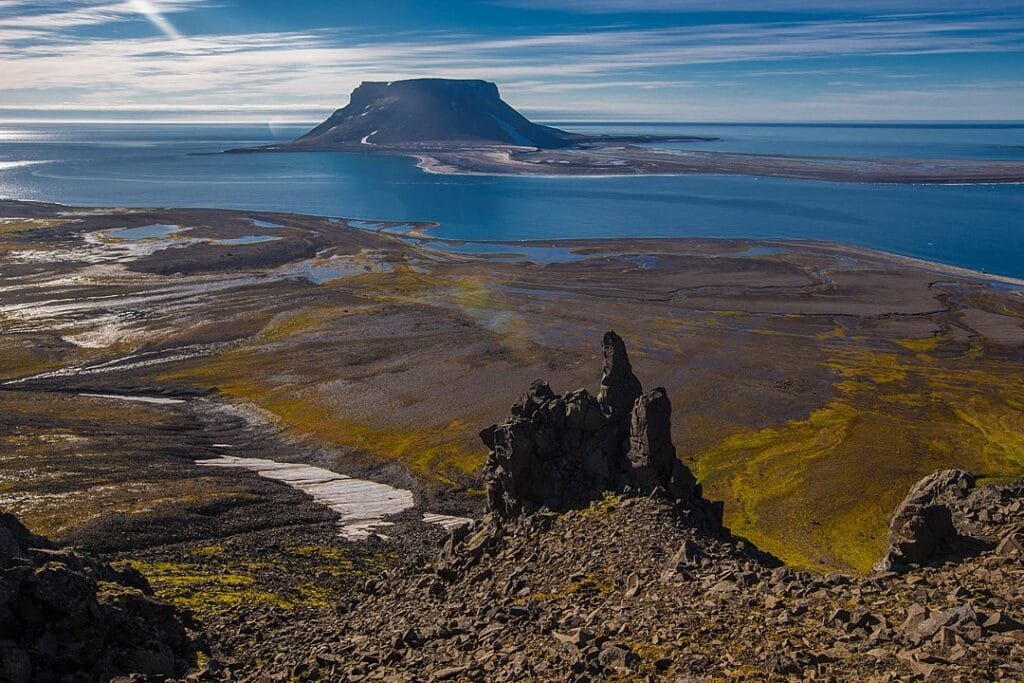The Top 5 Largest Deserts in the World
Deserts are not always the barren, sandy wastelands we imagine from movies. They can be icy, rocky, or sandy, united by one defining feature: low precipitation. Let’s explore the largest deserts on Earth, spanning diverse ecosystems and climates, each with its unique story to tell.
1. Antarctic Desert
- Area: ~14 million square kilometers (5.4 million square miles)
- Location: Antarctica

The Antarctic Desert is the largest desert on Earth, covering the entire continent of Antarctica. Despite its icy terrain, it is classified as a desert due to its extremely low precipitation—just 20 millimeters annually in some areas. The region is home to unique ecosystems, including microbial life beneath the ice, emperor penguins, and seals. Scientists also study Antarctica for insights into climate change and ancient atmospheric conditions trapped in ice cores.
2. Arctic Desert
- Area: ~13.9 million square kilometers (5.4 million square miles)
- Location: Arctic region

The Arctic Desert is a polar desert encompassing the Arctic Ocean and its surrounding regions, including parts of Canada, Russia, Greenland, and Norway. Like Antarctica, it receives minimal precipitation, mainly in the form of snow. Its fragile ecosystem supports polar bears, arctic foxes, and migratory birds. The Arctic also plays a vital role in regulating Earth’s climate, making its preservation critical.
3. Sahara Desert
- Area: ~9.2 million square kilometers (3.6 million square miles)
- Location: North Africa

The Sahara is the largest hot desert in the world. It stretches across 11 countries, from Egypt and Libya to Mauritania and Sudan. The desert’s vast dunes, oases, and rocky plateaus are home to diverse life, including camels, fennec foxes, and Berber communities. Historically, the Sahara has been a significant trade route and cultural crossroads, connecting Africa to the Mediterranean world.
4. Arabian Desert
- Area: ~2.33 million square kilometers (900,000 square miles)
- Location: Middle East

The Arabian Desert covers much of the Arabian Peninsula, including Saudi Arabia, Yemen, and Oman. Its harsh environment features sand dunes, gravel plains, and occasional oases. The Rub’ al Khali, or “Empty Quarter,” is the largest continuous sand desert in the world. Despite its aridity, the region supports wildlife such as Arabian oryx and is rich in oil reserves, shaping the global economy.
5. Great Australian Desert
- Area: ~1.7 million square kilometers (650,000 square miles)
- Location: Australia

The Great Australian Desert consists of multiple desert regions, including the Great Victoria Desert and Simpson Desert. These areas feature red sand dunes, salt pans, and sparse vegetation. Aboriginal peoples have thrived in this environment for tens of thousands of years, relying on traditional knowledge to navigate and survive the harsh conditions.
These five deserts are a testament to Earth’s diversity, covering icy polar landscapes, scorching sands, and ancient ecosystems. They remind us of the adaptability of life, the challenges of extreme climates, and the importance of conserving these unique environments. From the icy expanse of Antarctica to the sun-scorched sands of the Sahara, deserts are more than just barren lands—they are dynamic, evolving parts of our planet.
Understanding deserts and their roles in Earth’s climate and ecosystems can inspire awe and responsibility. Let’s appreciate these natural wonders while working to protect them for future generations.
For more top 5:
